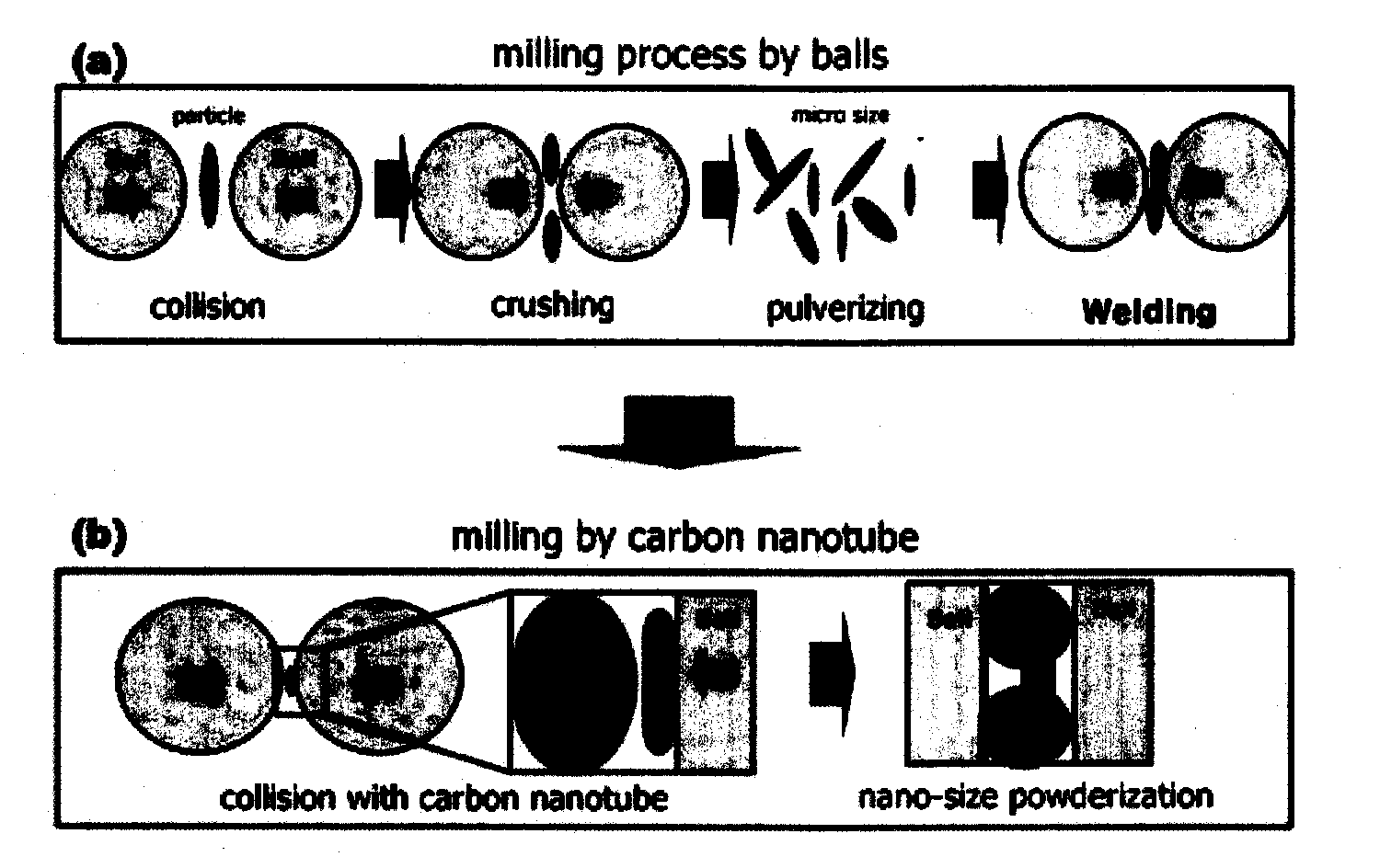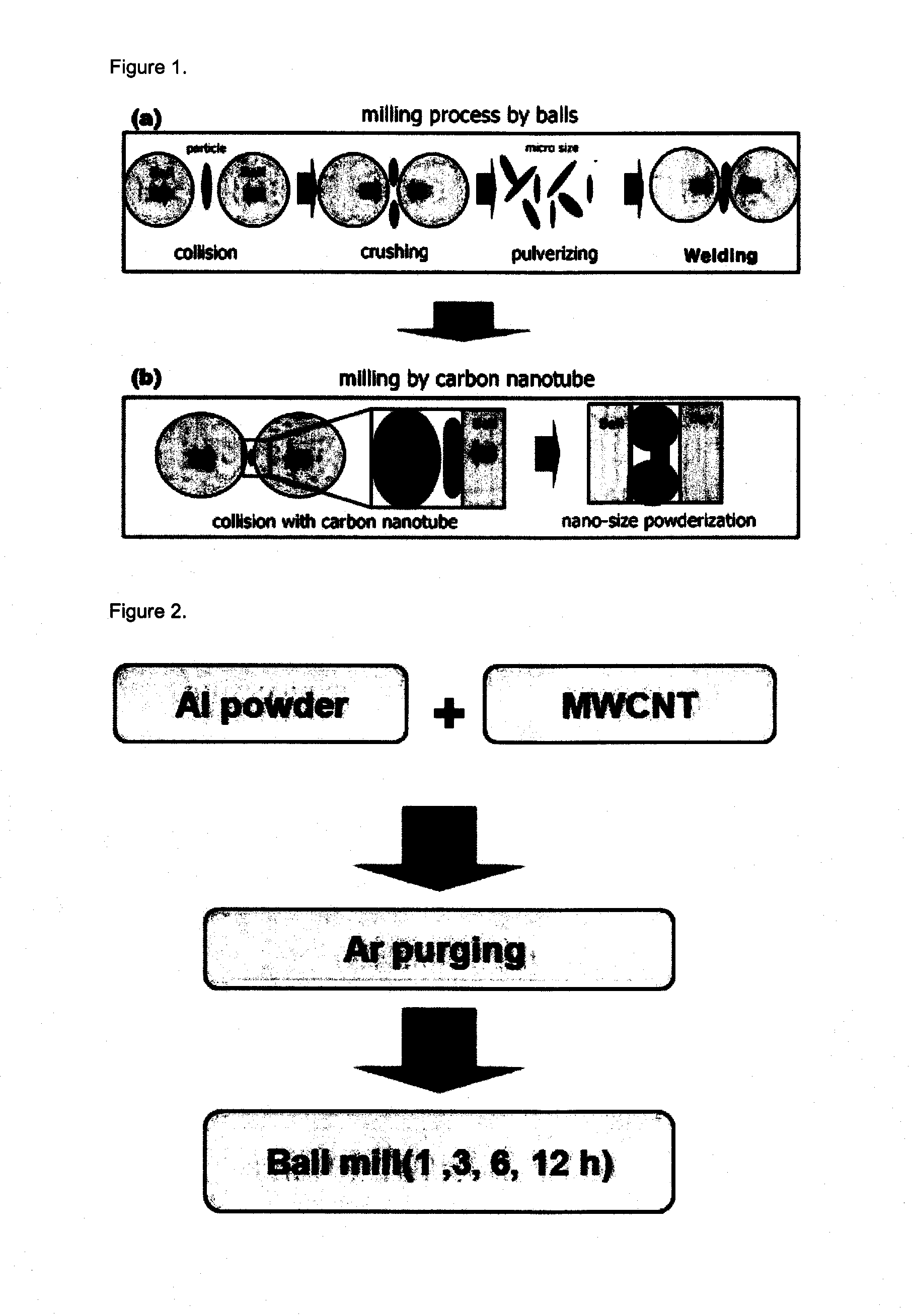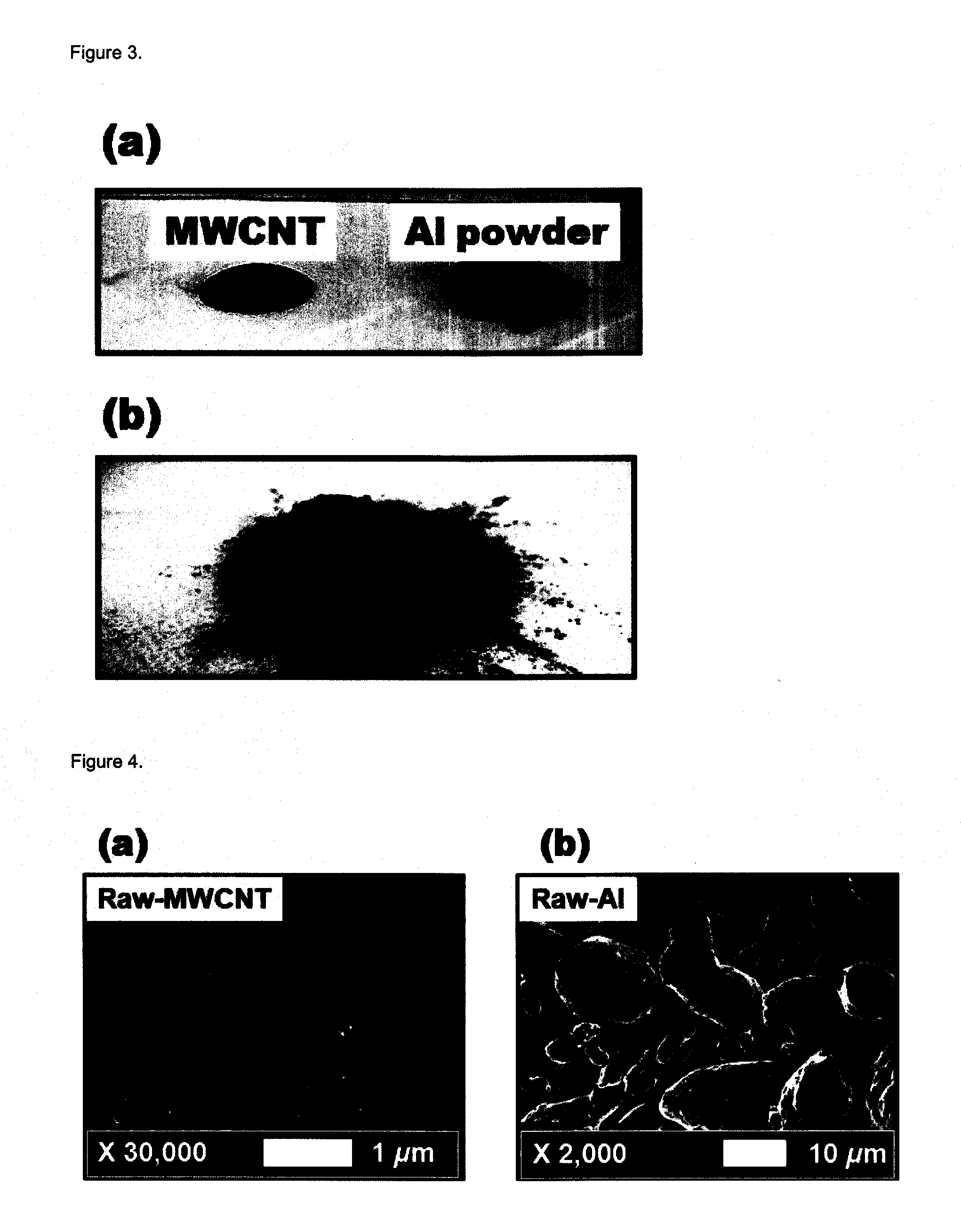Nanoparticles prepared using carbon nanotube and preparation method therefor
a carbon nanotube and nanoparticle technology, applied in the direction of conductive materials, non-conductive materials with dispersed conductive materials, explosives, etc., can solve the problems of complicated preparation process, limited production output, limited production output, etc., and achieve high specific surface and small crystal size, lightness and high oxidative properties of aluminum
- Summary
- Abstract
- Description
- Claims
- Application Information
AI Technical Summary
Benefits of technology
Problems solved by technology
Method used
Image
Examples
example 1-2
Analysis of the Prepared Aluminum Nanoparticle
[0049]A. Photographic Analysis
[0050]FIG. 3 shows photographs of an aluminum nanoparticle test sample, observed by a digital camera (Nikon, koolpix-3700) when the aluminum nanoparticle was prepared by using a carbon nanotube. FIG. 3a shows carbon nanotubes in 50 wt %, and aluminum particles before a milling step. FIG. 3b shows aluminum nanoparticles after the milling step. The volume of the aluminum nanoparticles was increased compared to that before the milling step. Thus, it can be found that the aluminum particles were micronized.
[0051]B. Electron Microscopic (SEM) Analysis
[0052]FIG. 4 shows a raw sample before a nanoparticle preparation process. FIG. 4a is an electron microscopic (SEM) photograph (JEOL, JSM700F) observed at 30,000× of a carbon nanotube. The carbon nanotube has a diameter of 10 to 20 nm, and a length of 10 to 20 μm. FIG. 4b is a photograph observed at 2,000× magnification of a raw aluminum. The sizes of the observed al...
example 1-3
Preparation of an Iron Nanoparticle by Using a Carbon Nanotube, and Electron Microscopic (SEM) Analysis
[0066]An iron nanoparticle was prepared in the same manner as described in Example 1-1 except that a carbon nanotube was used in 10 wt %, and ball milling was carried out for 6 hours.
[0067]An iron nanoparticle prepared by using a carbon nanotube, before / after the preparation, was analyzed by an electron microscope (SEM) (see FIG. 18). FIG. 18a is a photograph of a raw iron particle, observed at 100× magnification. FIG. 18b is a photograph of an iron nanoparticle obtained by a carbon nanotube through milling. Through analysis, it can be found that the size of an iron particle was reduced to a nano-size of 1 μm or less. Accordingly, according to the present invention, it is possible to prepare an iron nanoparticle by using a carbon nanotube.
example 1-4
Preparation of a Titanium Nanoparticle by Using a Carbon Nanotube, and Electron Microscopic (SEM) Analysis
[0068]A titanium nanoparticle was prepared in the same manner as described in Example 1-1 except that a carbon nanotube was used in 16 wt %, and ball milling was carried out for 6 hours.
[0069]A titanium nanoparticle prepared by using a carbon nanotube, before / after the preparation, was analyzed by an electron microscope (SEM) (see FIG. 19). FIG. 19a is a photograph of a raw titanium particle, observed at 100× magnification. FIG. 19b is a photograph of titanium nanoparticle obtained by a carbon nanotube through milling. Through analysis, it can be found that the size of a titanium particle was reduced to a nano-size of 1 μm or less. Accordingly, according to the present invention, it is possible to prepare a titanium nanoparticle by using a carbon nanotube.
PUM
| Property | Measurement | Unit |
|---|---|---|
| diameter | aaaaa | aaaaa |
| diameter | aaaaa | aaaaa |
| length | aaaaa | aaaaa |
Abstract
Description
Claims
Application Information
 Login to View More
Login to View More - R&D
- Intellectual Property
- Life Sciences
- Materials
- Tech Scout
- Unparalleled Data Quality
- Higher Quality Content
- 60% Fewer Hallucinations
Browse by: Latest US Patents, China's latest patents, Technical Efficacy Thesaurus, Application Domain, Technology Topic, Popular Technical Reports.
© 2025 PatSnap. All rights reserved.Legal|Privacy policy|Modern Slavery Act Transparency Statement|Sitemap|About US| Contact US: help@patsnap.com



